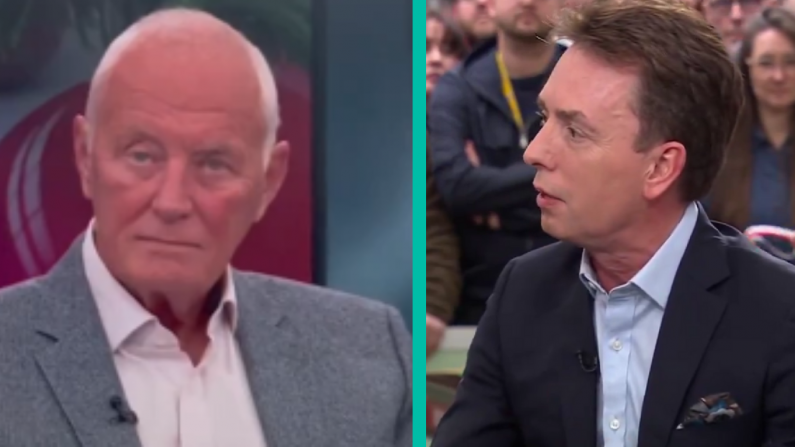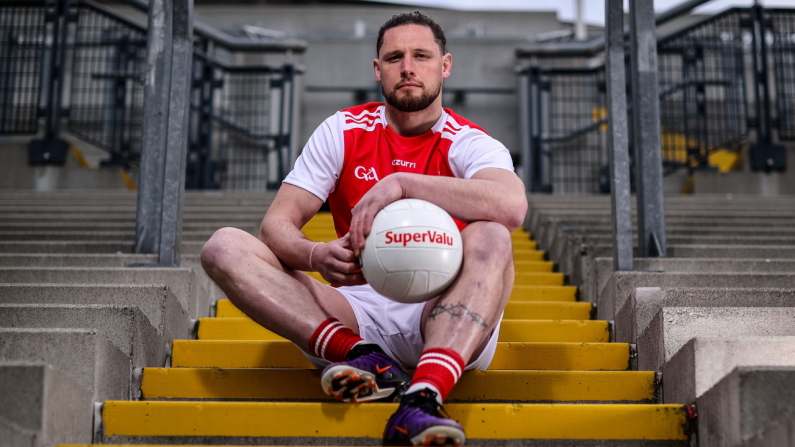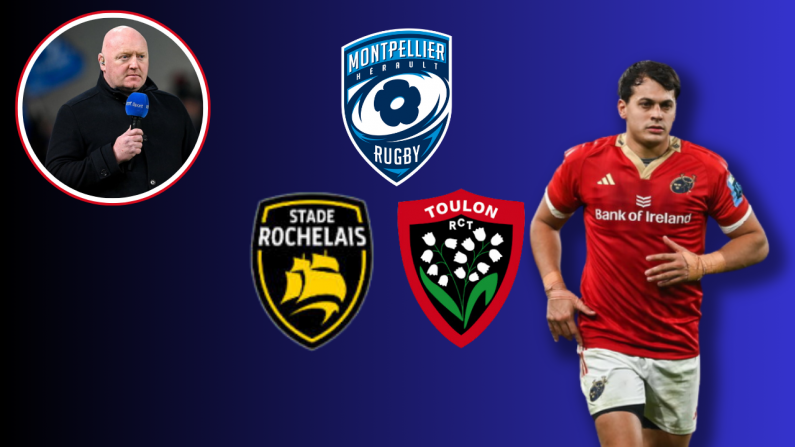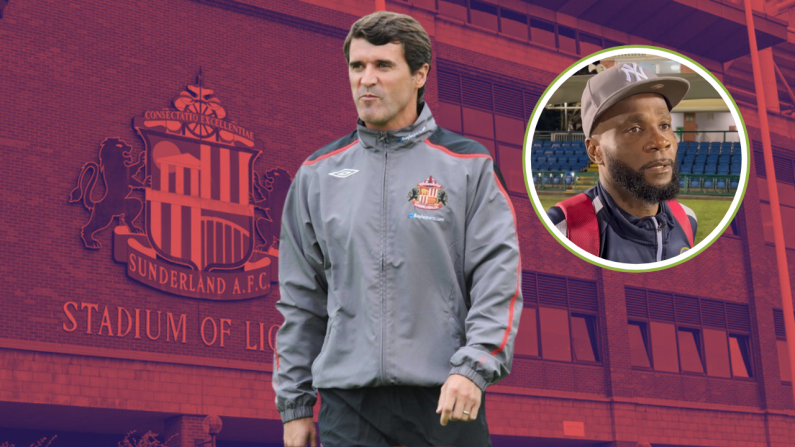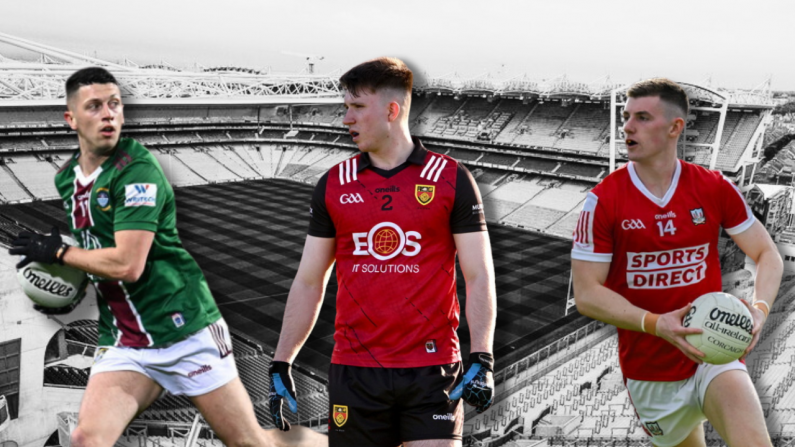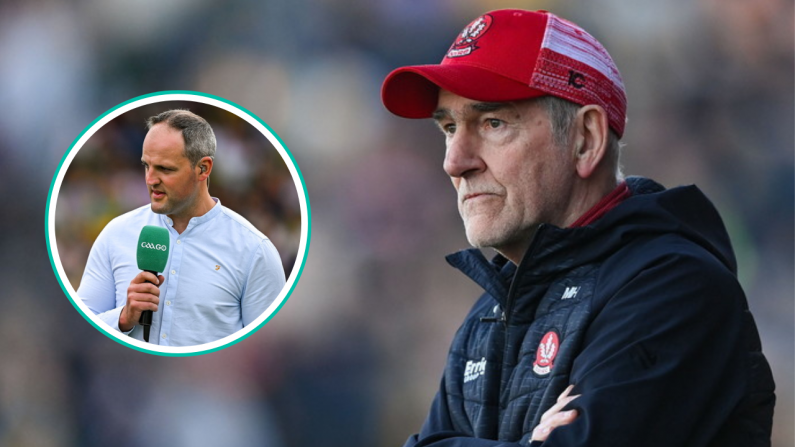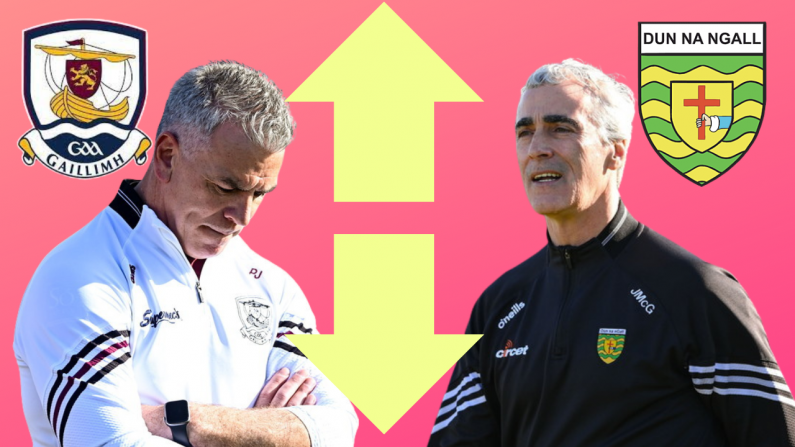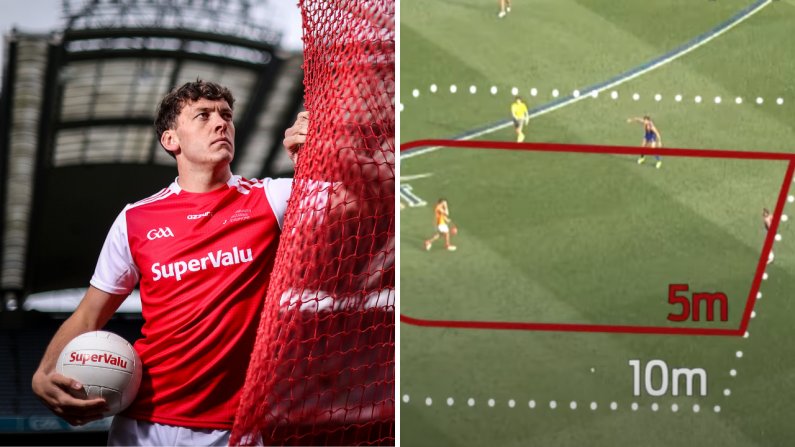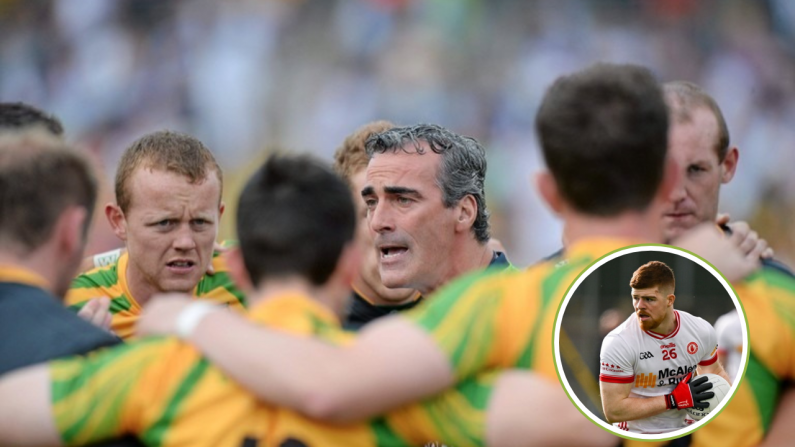The team selected by Jim Gavin for today's final has been submitted and as expected, there are no absentees. For the sixth time since 2013, he will lead his Dublin charges down Jones Road for an All-Ireland final. Every single one of them will make that trip.
It has been one of the most remarkably consistent features of this remarkably consistent side. No player has ever missed an All-Ireland final due to a soft-tissue injury during his reign. The 2011 breakthrough was powered by a change in culture. It remains a key factor in separating them from the rest.
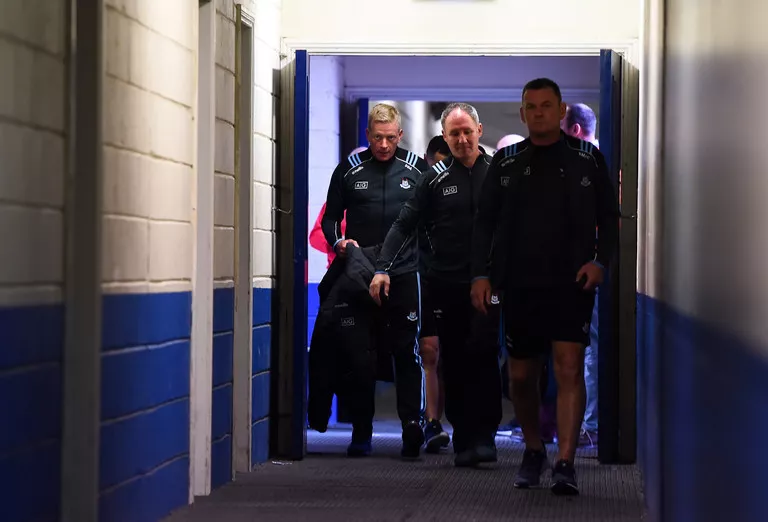
The days of ad-hoc fitness and weightlifting programmes that were once widespread even managed to reach their detrimental claws into the capital. Under Tommy Carr, Dublin spent several sessions per week toiling away in the Rathmines barracks or up and down hills in the Phoenix Park.
Driven to the point of exhaustion, then perplexed when they repeatedly collapsed before the finish line.
When Pat Gilroy took over as manager of their footballers in October 2008, he quickly moved to utilise the nearby elite sports science department at Dublin City University. Learning, yearning. He needed a blueprint. Tailored and strategic work-outs, not scattergun speculation.
From there Dublin would eventually blaze a trail to stardom. Smoke still clouds this close-knit organisation but peer through it and you will find one man who lit the fire under them; At DCU Professor Niall Moyna, alongside Dr Kieran Moran, began to forge a machine.

"There was probably a huge rugby influence early on in preparation of GAA teams, but rugby has nowhere near the same endurance base," Moyna tells Balls.ie. "That is a strength-based sport. It was just that most of the people in the country with expertise were coming from there."
He was a key part of Dublin's backroom team during their 2011 success and is now a four-time Sigerson Cup winning coach as well as Professor and Head of the School of Health and Human Performance at DCU.
Since 2016, former player and All-Ireland winner Bryan Cullen has worked with Dublin as their High Performance Manager. That came after four years spent with Leinster rugby as a strength and conditioning coach. He also has a PhD in Exercise Physiology, which he did under Moyna's watch.
Moyna's view is that other sports can influence the approach but not dictate it and Cullen understands that.
"If you look at an Aussie Rules players now, there are these well-conditioned, tall, mobile lads with nowhere near that big bulk. Their power to weight ratio is great. Dublin have adapted that."
Former 400-metre sprinter turned strength and conditioning coach Daniel Tobin is a man well versed in this area. He worked with Dublin throughout the noughties, setting a template for what was to come.

Tobin also worked with Leinster and Bryan Cullen. Now he is now head of performance at Gloucester rugby and is in full agreement that the sport had a huge influence on Gaelic football early on, for better and for worse.
It was the only fully established professional sport in Ireland. Professional rugby, all of the strength, power stuff came from that. I suppose there was too much of a focus on that end of it rather than specific to Gaelic football.
You cover a lot more ground in a game than you do in rugby. The body shape is different. The type of game is different. There was too much of a strength power focus back then because that was new, what is new often dictates moves. People say 'Oh, we haven’t been going that before. So let's go and do that'.
It should be all about getting ready for a game rather than a generic strength/power programme.
The population and funding advantage was finally capitalised upon with the right approach. Part of Jim Gavin's genius is his ability to utilise all aspects of an expert backroom band. In the modern game that is what it takes. Look at the star-studded ticket assembled by Liam Sheedy in Tipperary and the end result.
It takes a team to build an empire.
"My job has changed hugely over the years. Even now I am way more integrated with the head coach. I am almost an assistant coach advising on the intensity and volume they should have on the field. That is happening from a rugby point of view and in the GAA.
"It is advice on sessions, what intensity it is at. The speed work is very integrated with enhancing the skills of the game. It has evolved to become more specific to the sport."
That's the change in the assembled unit, then there is the change in approach.
"You had general programmes but then you start thinking more and more about the individuals, where they come from and what their training age is. It has to be player specific. How much experience do they have?
"Coming into a new set-up is stressful anyway. You can't add a full weights and conditioning programme on top of that. You have to do this intelligently."

Only seven 2013 final starters have been named to start on Sunday. Brick by brick, Gavin builds like an Irish developer. Sophistication in their regeneration. Yet every module seems like an upgrade. Debutants seamlessly sliding through on the seemingly never-ending conveyor belt.
Niall Moyna knows all about this process. It has done Dublin's young guns well. Take 2017 footballer of the year Con O'Callaghan. Over the course of two years, he has added four kg. It is a move that has suited his game, adding an imposing edge without detracting from his technical prowess. If it had, the system would have accounted for that and readjusted.
That is what Dublin do and what others don't.
"You have cases where a player would do nothing and then go into a senior squad and do the same as a guy who was there six or seven years. Can you imagine the damage that does, from nothing to that level!
"Con is an example of a guy who was starting from scratch. When you start from nothing and go a few years later you will inevitably develop physically with a well-structured programme but that is individual-based. Other players have gone the other way and toned down depending on what suits them.
"For example, Paul Flynn in the last few years actually did much less resistance training. When you have too much it interferes with your endurance capacity."
There is one question the chasing pack need to ask.
What is the next big thing? Where do we go next? You reach a law of diminishing returns with all this. The amount of time we are spending in gyms, the advantage is gone now because they are all big and strong.
I believe the next big breakthrough is in coaching science, not conditioning. Decision-making. Big strong athletes who are skilful are there now, the next big thing lies in coaching. How do you out-smart teams? That’s where the advantage lies.
It is about making decisions in the game and honing the ability to do that. When I was involved in Dublin in 2011, I’d say 90% of our training was games-based. That is on the field, not in the gym. 15 v 15 or 7 v 7. All about making decisions during high-intensity games. You can not replicate that in the gym.
"When I was involved with DCU, people find it hard to believe, but we did no conditioning at all. Zero. I took them into the lab and did tests and saw they already ranked in the top 5% for their age. So we did nothing. We met twice a week and everything was game-based. Using our time wisely."

The slowest change of all is in the personnel alongside Gavin. That is deliberate. Consider the current brain trust and their stints: Shane O'Hanlon, Mick Deegan, Declan Darcy there since 2012, Jason Sherlock since 2015, Byran Cullen since 2016.
As far as Tobin is concerned, in roles like his, it must be this way.
"I actually can not understand how people can do it without continuity. To be honest it takes about three years to get a plan implemented. That’s even at a professional level. It takes time to put your stamp on what you want.
"What we do in S and C, that is a relatively small percentage of their training load. You have to take time and be progressive. You can’t expect people to squat 150 kilos within a few weeks. You need a long term view of it. Gradual progressions.
"Sometimes you try something. Say you get a player to add three, four kilos. You might notice it doesn't suit him based on feedback from the player and their performance. They say 'okay, I am a little better taking contact but I can’t get around the way I used to.' That still happens in sport.
"It is more important in rugby because of the collisions but in general, if someone adds kilos you may take something else from their game around the park. How does he feel? Does his high-speed running drop off by 10-15%? That is not what we want. You need time to have a relationship with players so they can give you that feedback. You respond and tailor to them."
This is where discourse around Dublin can often go wrong. It is right to focus on what they have but there are lessons in what they do. A county that invests in people rather than facilities.
They stumbled into the familiar pitfalls and dragged themselves out of them. As Tobin explains, it is about marrying the topical with the trusted.
When GPS first came on the scene there was a big massive overreaction in what we could do. 'We don’t even have to go outside, we can stay inside and see training on the computer screen and see how lads went today.' Over time you realise it is just a tool to help inform you, you still look at training with your own eyes to ensure that intensity is good.
The numbers hopefully back that up later on. Instead of the numbers leading the decision making.
So Diarmuid Connolly may have worn a GPS during club games but Dublin selector Paul Clarke was there watching him.
This streak shows no sign of ending, and why would it when the cards are stacked as they are? They were always an ample supply of bullets, the question hung over who was staring down the scope.
They are not alone in maximising all at their disposal. Moyna points to his native county of Monaghan the exceptional job Malachy O'Rourke did there.
"You can bring in a guy like Brian, who has a PhD and has played the game. He understands it. I believe the intensity of their in-house games is just feckin' way off the charts. That is an advantage. You have to remember where the game started. We were light-years behind anyone else, we thought we were training properly by running around fields.
"Every county does not have the resources of large, populated counties. Dublin have a huge advantage. Even the fact they all live in Dublin. Michael Murphy had to leave here every evening to drive three, four hours to Donegal and then drive back. It is a huge advantage off the bat. But that doesn't mean you ignore what they are doing. I mean Dublin’s gym is not as good as Kerry's. It is a portacabin in Parnell Park."

Some work hard in training, Dublin work hard on their game. It is an age-old truism; brains trump brawn.
"I would say there is one major reason, one major reason and people will laugh at this. They do less than anyone else. I spoke to Brian at length about this. They really, really track their workload. They are big on recovery, big on tracking workloads.
"You have had coaches in recent years who thought unless you are leaving a field puking, you aren't training hard enough. I would say Dublin are training smarter than anyone else. They are maximising their return."
A big investment, producing the ultimate dividend.



